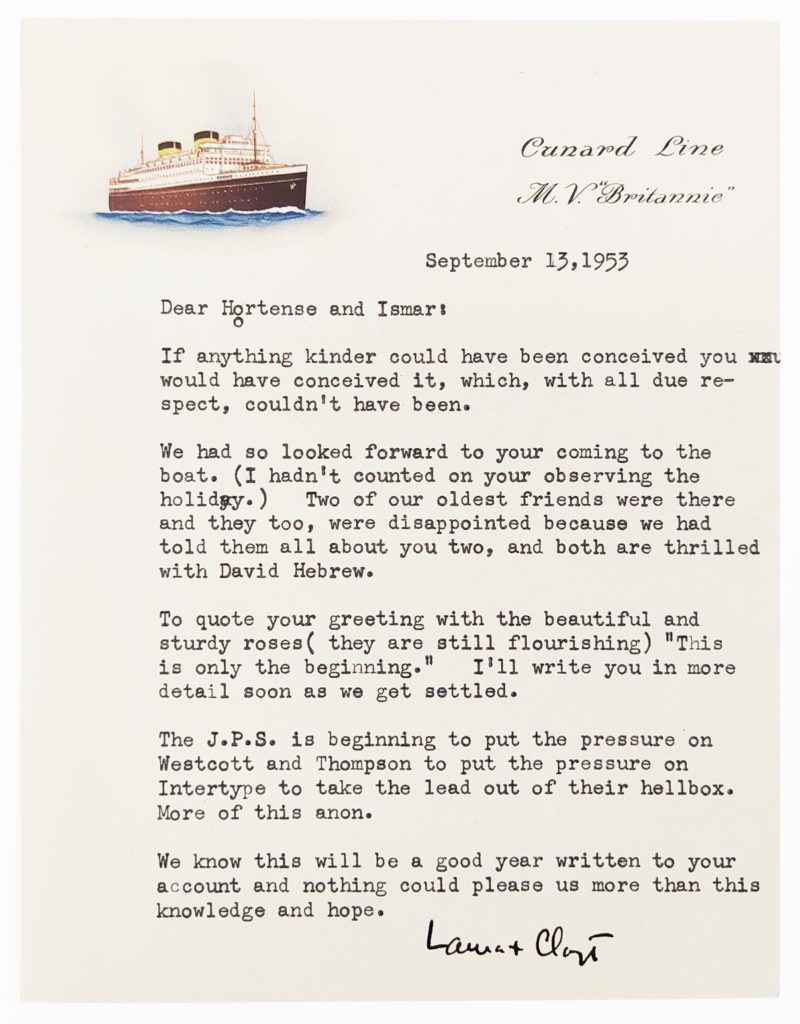Clayton Whitehill, 1898–1963, painter, educator, writer.
Laura Lee, c. 1898–1965, film critic, writer.
Clayton Whitehill, son of a Philadelphia furniture manufacturer, graduated from the Columbia University School of Journalism, where he was president of the senior class. He edited “With the Intercollegiate” in The Maccabaean, a monthly publication of the Zionist Organization of America, and wrote book reviews for The American Hebrew. After graduation, he joined the staff of the United News in Washington, D.C., where he reported on political, labor and economic issues. However, he wrote a vivid and moving eyewitness account of the tragic collapse of the Knickerbocker Motion Picture Theater on January 28, 1922. He had happened to be passing by when its snow-laden roof collapsed, killing more than a hundred adults and children.
But by the end of the decade, Whitehill seems to have left journalism and, at some point, begun to work in advertising and typography. He taught advertising design at the then Philadelphia School of Industrial Art. By the 1940s, he was exhibiting his “subtle and imaginative”1The Philadelphia Inquirer, December 19, 1943, p. 58. paintings. In 1947, Barnes and Noble published his Moods of Type, which was still in print more than six decades later. Its blurb read, “Throughout history, in every period of advance in culture and design, the basic key to every change and progression is to be found in the forms and shapes of the letters used by men in the graphic communication.” Through the 1950s, Whitehill taught painting extension courses, gave lectures and was president of the Philadelphia chapter of Artists’ Equity.
Laura Lee enjoyed almost as disparate a career path as her husband. She hailed from Hutchinson, Kansas and got a degree in chemistry from the University of Chicago. Initially she worked as a chemist and bacteriologist, but in 1929, she joined the staff of The Evening Bulletin, becoming its movie critic in 1937. Post-retirement she continued to write occasional stories for the paper. During 1953 and 1954, the couple spent twelve months traveling and working in Europe. After their return, Clayton told a reporter that he felt a greater kinship artistically with northern Europe, but “[o]f course, Italy is a sublime place to live gloriously…” He and Laura moved to Perugia in 1958. Clayton continued to exhibit his work in the United States and Italy until his death in 1963. In 1964, a studio in the Jeanette W. Rosenbaum (his late sister) Art Center was named in his honor. In November 1965, Laura Lee was found in her gas-filled apartment in Perugia. Friends told police that she had been despondent since the death of her husband.2Special to The Inquirer, The Philadelphia Inquirer, November 20, 1965, p. 21.
The Print Club of Philadelphia showed Whitehill’s work, Song of Songs, in its Hebrew Tercentury exhibition in 19543Feinstein, Sam, Philadelphia, The Art Digest, volume 29, issue 4, November 15, 1954,p 15. and Whitehill seems to have been involved with a planned edition of the poem for the Jewish Publication Society. The Hebrew text was to be set in David Hebrew, either typeset by Photolettering or pasted up by Ismar David or set by Westcott and Thompson, if Intertype issued the face in time (as referenced in the note below).
In his preface to Moods of Type, Clayton Whitehill wrote, “The suggestion to write this book came from Dr. Leslie and Miss Hortense Mendel of the A-D Gallery, New York. For this and for their criticism and encouragement, I’m deeply grateful.” Ismar David and Hortense Mendel must have been invited to a send-off for the Whitehills on the Cunard liner Britannic on the eve of their year-long travels in Europe.


























